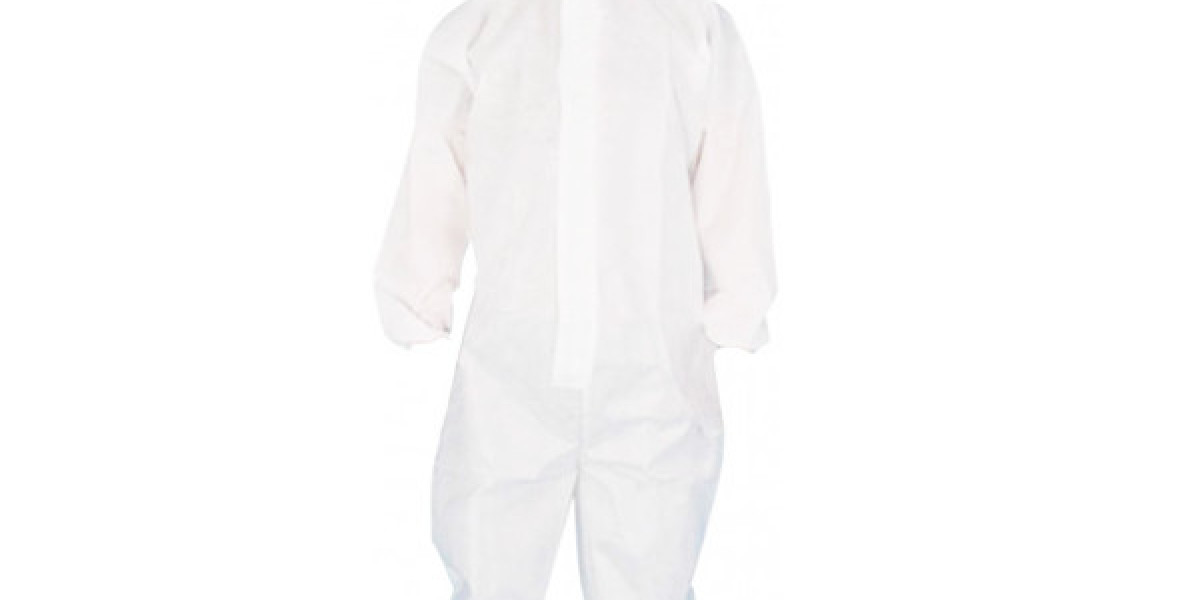Isolation disposable gowns are an integral part of infection control measures in healthcare environments. Designed for single use, these gowns serve as a protective barrier against potential contaminants, including bodily fluids and harmful microorganisms. Their use helps minimise the risk of cross-contamination, ensuring the safety of both medical staff and patients. Constructed from durable and fluid-resistant materials, isolation gown offers varying levels of protection to suit different medical settings and procedures. With strict adherence to regulatory standards, they form a reliable component of personal protective equipment. Additionally, the design and fit of these gowns contribute to their effectiveness, enabling healthcare professionals to perform their duties safely and comfortably. The ongoing development of materials and technologies underscores their growing importance in addressing both infection control and environmental concerns within the healthcare industry.
Purpose of Isolation Disposable Gowns
Isolation disposable gowns are designed to minimise exposure to harmful pathogens and bodily fluids in healthcare settings. Acting as a physical barrier, these gowns prevent the transfer of infectious agents between healthcare workers and patients. They are particularly essential during procedures where there is a high likelihood of contamination, offering an extra layer of protection. Their single-use nature ensures that any contaminants are effectively contained and disposed of after use, reducing the risk of cross-contamination.
These gowns are tailored to meet the requirements of various medical scenarios, addressing the need for safety in environments where infection control is a priority. By providing comprehensive coverage of the body, they contribute to maintaining hygienic conditions and protecting individuals from the spread of infectious diseases, making them an indispensable element of personal protective equipment in healthcare practices.
Materials Used in Gown Construction
Isolation disposable gowns are crafted from lightweight and durable synthetic materials, such as polypropylene and polyethylene. These materials are chosen for their resistance to fluids and their ability to act as an effective barrier against contaminants. Some gowns incorporate additional layers or specialised coatings to enhance their protective properties, particularly for high-risk procedures.
The selection of materials also impacts the gown's breathability, ensuring comfort during extended wear. Advances in fabric technology have enabled the production of gowns that strike a balance between protection, ease, and flexibility. The choice of material depends on the intended application, with each type offering specific benefits suited to varying levels of exposure and medical requirements.
Types of Isolation: Disposable Gowns
Isolation disposable gowns are available in various designs and specifications to meet the diverse needs of healthcare environments. They differ in levels of fluid resistance, with some gowns designed for high-risk situations, such as surgical procedures, and others for general medical use. Variations also exist in terms of sleeve length, back closures, and fastening methods to ensure appropriate coverage and secure fit.
Gowns may be categorised by their level of protection, with classifications often based on international guidelines. Certain types incorporate features like reinforced fronts or cuffs for enhanced durability. This variety enables healthcare professionals to select gowns that meet the specific requirements of their roles, thereby promoting both safety and practicality in medical settings.
Importance of Proper Fit
Ensuring a correct fit is crucial for maintaining the protective integrity of isolation disposable gowns. A gown that is improperly sized may create gaps in coverage or restrict movement, diminishing its effectiveness as a barrier against contaminants. Properly fitted gowns accommodate a wide range of body types, allowing healthcare professionals to perform their tasks without hindrance.
Features such as adjustable ties, elastic cuffs, and well-proportioned dimensions contribute to achieving a secure and comfortable fit. Inadequate fit can lead to discomfort or the risk of exposure, emphasising the need for gowns designed to meet diverse requirements. Healthcare settings must prioritise gowns that provide both comprehensive protection and ease of use, aligning with safety standards and practical functionality.
Standards and Regulations
Isolation disposable gowns are manufactured in accordance with stringent guidelines to ensure their reliability and performance in medical settings. These regulations address factors such as fluid resistance, seam strength, and overall design to ensure adequate protection against contaminants. Standards are typically established by international and national health authorities, providing precise specifications that manufacturers must adhere to during the production process.
Compliance with these standards is verified through rigorous testing processes that assess the gown's ability to act as an effective barrier under various conditions. The consistent application of these guidelines is crucial in maintaining uniformity and quality across products, ensuring that healthcare institutions can rely on these gowns to meet infection control requirements and effectively safeguard staff and patients.
Environmental Impact of Using Isolation Gown
The widespread use of isolation disposable gowns has implications for environmental sustainability, as these single-use garments contribute to the accumulation of medical waste. Their construction from non-biodegradable materials such as polypropylene and polyethylene poses challenges for waste management and recycling efforts. To address these concerns, research is being conducted into developing more eco-friendly alternatives, including biodegradable and compostable materials.
Some healthcare systems are also exploring methods to enhance waste segregation and recycling processes, aiming to mitigate environmental impact while maintaining safety and functionality. While infection control remains the primary focus, the growing emphasis on sustainability is encouraging the adoption of practices and materials that reduce the ecological footprint of isolation gown within healthcare operations.
Usage in Various Healthcare Settings
Isolation disposable gowns are utilised in a wide range of healthcare environments to ensure safety and hygiene during medical procedures. Hospitals commonly use these gowns in wards, surgical theatres, and emergency departments, where exposure to bodily fluids and pathogens is frequent. Clinics and outpatient facilities adopt them during diagnostic tests or minor procedures that involve potential contamination risks.
In care homes, these gowns protect staff and residents, particularly during outbreaks of infectious diseases. They are also essential in laboratories and specialised units dealing with high-risk biological agents. The adaptability of these gowns ensures their relevance across diverse medical scenarios, with specific designs and features tailored to meet the unique demands of each healthcare setting.
Cost Considerations
The pricing of isolation disposable gowns is influenced by factors such as material quality, level of protection, and production processes. Gowns with advanced features or specialised designs may carry a higher cost due to the enhanced security they provide. Institutions often assess their requirements to strike a balance between safety and budgetary constraints, considering the frequency and context of usage. Bulk purchasing and long-term supplier agreements are strategies employed by many healthcare providers to effectively manage expenses.
Additionally, variations in global manufacturing and supply chain conditions can impact pricing, making cost management a crucial aspect of procurement planning. Selecting gowns that meet required safety standards while staying within budget limitations remains a critical focus for maintaining operational efficiency in healthcare environments.
Impact on Infection Control
Isolation disposable gowns play a crucial role in minimising the transmission of infectious agents within healthcare environments. By forming a physical barrier, these gowns limit direct contact with harmful pathogens, significantly reducing the risk of contamination during medical procedures. Their effectiveness depends on proper usage and adherence to infection control protocols, ensuring consistent protection in high-risk situations.
Designed for single use, they prevent cross-contamination by containing contaminants and allowing safe disposal after use. When integrated with other protective measures, such as gloves and masks, these gowns enhance the overall strategy to maintain hygienic and sterile conditions. Their role extends across various healthcare settings, supporting efforts to safeguard staff and patients from infectious risks.
User Comfort and Convenience
The design of isolation disposable gowns prioritises wearer comfort to ensure they can be used effectively during extended periods. Lightweight materials and breathable fabrics are often employed to minimise discomfort, particularly in demanding healthcare environments. Flexible construction enables ease of movement, allowing healthcare professionals to perform tasks without restriction. Features such as elasticated cuffs and adjustable ties contribute to a secure and customised fit.
Efforts to reduce material stiffness while maintaining protection enhance overall usability. Balancing protective functionality with comfort supports compliance with infection control practices, as well-fitted and comfortable gowns encourage consistent use in clinical settings.
Supply Chain and Availability
The availability of isolation disposable gowns relies on efficient production and distribution processes to meet the demands of the healthcare industry. Factors such as raw material sourcing, manufacturing capacity, and global transportation networks play a significant role in ensuring consistent supply. Healthcare institutions often coordinate with multiple suppliers to mitigate potential shortages and manage inventory effectively. Strategic stockpiling during periods of stable demand can help prevent disruptions during emergencies or outbreaks.
Additionally, advancements in logistics and predictive analytics are being explored to optimise supply chain management, ensuring the timely delivery of these essential protective garments across diverse medical environments.
Future Innovations
Advancements in isolation disposable gowns focus on integrating cutting-edge materials and innovative technologies to improve functionality and sustainability. Researchers are exploring fabrics that offer enhanced protection while minimising environmental impact, including those made from biodegradable or recyclable materials. Developments in design aim to optimise comfort, fit, and ease of use, ensuring adaptability across various medical scenarios.
Additionally, incorporating features such as antimicrobial coatings or built-in monitoring systems could further enhance infection control measures. As these innovations progress, the goal remains to align protective efficiency with sustainability, reflecting the evolving priorities of healthcare systems in maintaining safety and environmental responsibility.
Conclusion
Isolation gown is a non-negotiable component of infection control in medical settings across Australia. They function as a vital protective barrier against pathogens and bodily fluids, ensuring the safety of both staff and patients. Constructed from durable, fluid-resistant materials like polypropylene, these gowns adhere to strict standards and regulations regarding fluid resistance and proper fit. While their single-use nature presents an environmental impact challenge, their core purpose—preventing cross-contamination and supporting high levels of hygiene—makes them indispensable for maintaining operational integrity and public health.
Frequently Asked Questions
What is the primary purpose of an isolation gown in healthcare?
The primary purpose of isolation gown is to serve as a physical barrier that prevents the transfer of infectious agents, such as viruses, bacteria, and bodily fluids, between healthcare workers, patients, and the environment. This significantly minimises the risk of cross-contamination during medical procedures and care.
What are these gowns typically made from and why?
Isolation disposable Gowns are typically made from lightweight, synthetic, and durable materials such as polypropylene and polyethylene. These materials are chosen specifically for their fluid resistance and ability to effectively act as a barrier against contaminants without compromising user comfort or flexibility.
Why is the proper fit of an Isolation disposable Gown so important?
The proper fit is crucial because an ill-fitting gown can create gaps in coverage, compromising the protective barrier and increasing the risk of exposure to contaminants. A well-fitted gown, often featuring elastic cuffs and adjustable ties, ensures comprehensive coverage and allows the wearer unrestricted movement for performing tasks safely.
Are there different types of Isolation disposable Gowns?
Yes, gowns come in different types classified by their level of protection and fluid resistance. Some are designed for general-purpose use, while others feature reinforced areas or specialised coatings for high-risk procedures like surgery, ensuring the appropriate level of protection for various clinical scenarios.
How do disposable gowns affect the environment?
Since Isolation disposable Gowns are designed for single use and often made from non-biodegradable synthetic materials, their widespread use contributes significantly to the accumulation of medical waste. The healthcare industry is actively seeking future innovations, like biodegradable or recyclable materials, to mitigate this environmental impact while maintaining safety standards.
Related Business Listings |














